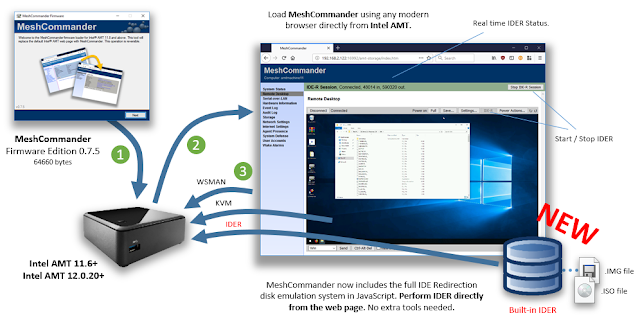MeshCentral2 - Server-side IDER & Real-time heat map

MeshCentral is an open source web based remote computer management web site. Last week, an all-new IDE redirect (IDER) library was unveiled completely built into JavaScript that allows MeshCommander to perform remote disk redirection to Intel® AMT. We also showed that we could use MeshCommander thru MeshCentral to perform IDER, using MeshCentral as a traffic relay. This week, we add upon what was announced last week with MeshCentral now gaining the ability to launch an IDER session from the server allowing faster, lower latency disk streaming over the Internet. On top of this, both MeshCommander and MeshCentral IDE redirection now feature a disk sector read “heat map” showing network sector reads in real time. In detail: MeshCentral IDER . With the latest MeshCentral server, users can now upload disk images (.img / .iso) into the server using the “My Files” tab. Then, they can signal the server to launch a disk redirection session to a target Intel AMT device. The server will do a...
